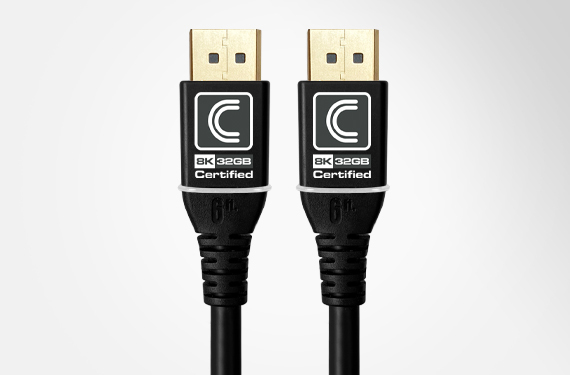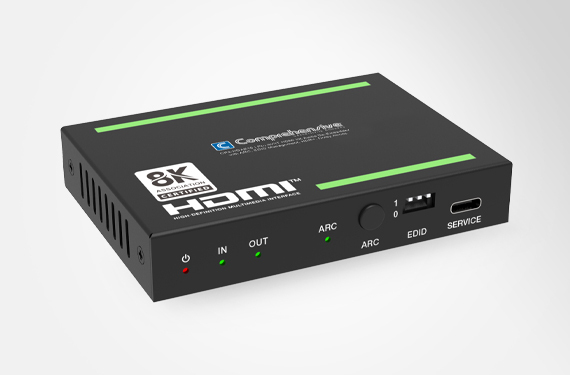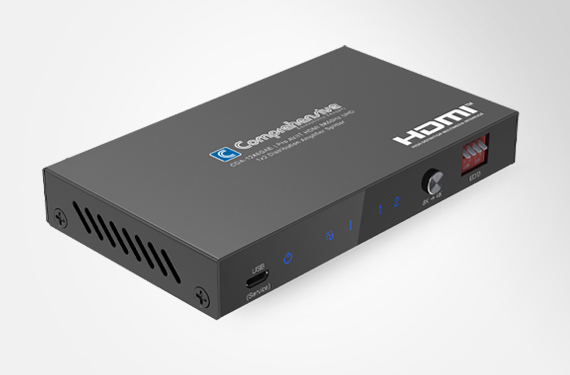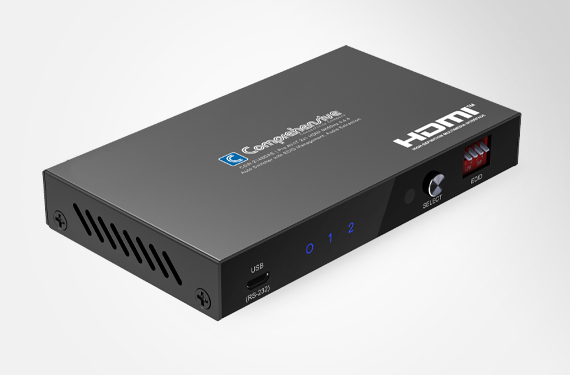8K refers to an image or display resolution with a width of approximately 8000 pixels. 8K UHD (7680 × 4320) is the highest resolution defined in the Rec. 2020 (UHDTV) standard.
8K display resolution is the successor to 4K resolution. TV manufacturers pushed to make 4K a new standard by 2017. Like 4K and 1080p before it, 8K is the next big resolution upgrade for TVs and monitors that could herald a new era of hyper realistic visuals in movies, games, and television. It also promises to be one of the most demanding and is 16 times the number of pixels than 1080p. That will stretch the limits of internet connections for streaming content, and graphics chips in PCs and consoles trying to render games at that resolution.
Why Is It Called 8K?
 Japan's public broadcaster NHK was the first to start research and development of 4320p resolution in 1995. The format was standardized by SMPTE in October 2007, Interface standardized by SMPTE in August 2010 and Recommended as the international standard for television by ITU-R in 2012. Followed by public displays at electronics shows and screenings of 2014 Winter Olympics in Sochi and public viewings in February 2014 and the FIFA World Cup in Brazil in June 2014 using HEVC with partners Astro Design and Ikegami Electronics.
Japan's public broadcaster NHK was the first to start research and development of 4320p resolution in 1995. The format was standardized by SMPTE in October 2007, Interface standardized by SMPTE in August 2010 and Recommended as the international standard for television by ITU-R in 2012. Followed by public displays at electronics shows and screenings of 2014 Winter Olympics in Sochi and public viewings in February 2014 and the FIFA World Cup in Brazil in June 2014 using HEVC with partners Astro Design and Ikegami Electronics. On January 6, 2015, the MHL Consortium announced the release of the super MHL specification which will support 8K resolution at 120 fps, 48-bit video, the Rec. 2020 color space, high dynamic range support, a 32-pin reversible super MHL connector, and power charging of up to 40 watts.
On January 6, 2015, the MHL Consortium announced the release of the super MHL specification which will support 8K resolution at 120 fps, 48-bit video, the Rec. 2020 color space, high dynamic range support, a 32-pin reversible super MHL connector, and power charging of up to 40 watts.On March 1, 2016, The Video Electronics Standards Association (VESA) unveiled DisplayPort 1.4, a new format that lets the use of 8K resolution (7680 × 4320) at 60 Hz with HDR and 32 audio channels through USB-C.
On January 4, 2017, the HDMI Forum announced HDMI 2.1 featuring support for 8k video with HDR, will be "released early in Q2 2017".
8K Association Formed at CES 2019 to Help Develop 8K Ecosystem.
In early February 2020, Samsung Electronics, announced during their unpacked event that their Samsung Galaxy S20 can video record in 8K, which uses 600 MB of storage per minute.
| Cables | Max Resolutions | Max Data Rate |
|---|---|---|
| DisplayPort v1.4 | 4K 120Hz, 8K 60Hz | 32.4Gbps |
| DisplayPort v2.0 | 4K 144Hz, 8K 60/120Hz, 10K 60Hz, 16K 60Hz | 80Gbps |
| HDMI 2.1 | 4K 120Hz, 8K 60/120Hz, 10K 120Hz | 48Gbps |
| USB4 | 4K 120Hz, 8K 60Hz | 40Gbps |
-

Enhanced Audio Return Channel (eARC) -

Auto Low Latency Mode (ALLM) -

Variable Refresh Rate (VRR) -

Quick Media Switching (QMS) -

Quick Frame Transport (QFT) -

Dynamic HDR, HDR10, Dolby Vision
What are forms of resolutions 8K will take?
| Resolution | Size | Chroma subsampling | Refresh Rate | Compression |
|---|---|---|---|---|
| 8K | 7680 X 4320 | 4:2:0, 4:4:4 | 30Hz | (with DSC) (no compression) |
| 60Hz | ||||
| 120Hz |
| Resolution | Term | Size |
|---|---|---|
| 480p | SD | 640 x 480 |
| 720p | HD | 1280 x 720 |
| 1080p | Full HD | 1920 x 1080 |
| 4K | UHD | 3840 x 2160 |
| 5K | - | 5120 x 2700 |
| 8K | 8K UHD, UHD-2, Super Hi-Vision | 7680 x 4320 |

The new 8K standard (also called 8K UHD) takes this a step further, delivering the equivalent of four 4K displays in a 2 x 2 grid, for a total resolution of 7680 x 4320 pixels. If you're keeping score at home, this is a quadrupling of a quadrupling, and offers the same resolution as 16 full- HD displays tiled in a 4 x 4 grid.
Comprehensive's 8K Solutions deliver stunning high-resolution imagery and ensure you are deploying and using the latest state-of-the-art solutions. With 4 times the resolution of 4K, 16 times the resolution of the HDTV, Dynamic HDR and speeds of up to 48Gbps and beyond, Comprehensive's 8K Solutions offer an array of benefits for the future of movies, TV shows, and video gaming.
8K FAQs
A: The term 8K has long been fuzzy, but thanks to the Consumer Technology Association, which sets the rules manufacturers abide by, we now have an official definition: an 8K Ultra HD Display has a resolution of at least 7680 x 4320 pixels for 33 million active pixels total. In other words, 8K has four times the resolution of 4K, and 16 times the resolution of the HDTV.
Q: Will I need to change my HDMI 2.0 and DisplayPort 1.2 cables to benefit using 8K?
A: Yes, in order to transmit AV signals from an 8K video source to an 8K display you would need to change your HDMI to a 2.1 version cable and for DisplayPort version 1.4 cable to benefit from the full 8K resolutions.
Q: Does anyone broadcast in 8K?
A: As of late 2020, 8K content has yet to come to any streaming, broadcast, or physical media. ... While none of the major streaming services (besides YouTube's support of the format) have announced 8K plans yet, the first 8K shows and movies in the home will probably come from Amazon, Apple TV+, Disney+, and Netflix.
Q: Does 8K replace 4K?
A: Over time, yes, 8K will replace 4K eventually. But the transition will be a slow one, taking at least 3-5 years if not longer before 8K has the majority of the market. By that time, the panel costs will drop down significantly and make the technology more affordable for the average consumer. In commercial spaces, 4K may remain even longer. In 2012, FHD 1080p TVs were selling for the same or higher price than 4K TVs today, size per size.
Q: Can the human eye tell the difference between 4K and 8K?
A: It's possible to see the difference between 4K and 8K video, but depends on the size of the display and the distance from the viewer. The human horizontal field of view (HFOV) is about 175 degrees
Q: Is there anything I can watch?
A: There’s not a lot! If you were to buy an 8K TV right now, you wouldn’t be able to buy an 8K cable box. Popular streaming apps — like Netflix, Amazon Prime Video and Hulu — are still plugging away at 4K, in part because 8K files are enormous. And the prospects for an 8K disc format are also fairly grim. However, some broadcasters, specifically those in Italy and Japan, are pushing to capture the 2020 Tokyo Olympics in 8K, and YouTube has had 8K content since 2015.
Q: Is 8K good for gaming?
A: Gaming in 4K, much less 8K, is a tricky proposition at the moment, especially as consoles are concerned. Right now, the base versions of Sony’s PS4 and Microsoft’s Xbox One don’t have the horsepower for 4K. But by the end of 2020, if all goes as planned, we’ll see the new PS5 and Xbox Series X both of which will support 8K. Hopefully, they’ll spur on a generation of new console games that make use of that power.
Q: Is 8K Better Than 4K?
A: 8K is simply a higher resolution. The easiest way to think of it is that 8K will be 4 times the resolution of a 4K image. 8K resolution gives you 7680 pixels by 4320 pixels, this provides a clearer picture.In the same way that 4K overtook 1080p – in the next few years you should see a rise in 8K being the industry standard. Should You Buy an 8K TV or wait? 8k is very new and if you want to buy a TV set that is capable of displaying 8k quality images, at the minute it will cost quite a lot.
Q: Is 8K really worth it?
A: Until you can easily get 8K content, either through a subscription or on the web's largest video hosting service, 8K simply isn't worth it. ... While up scaled content can't match the perceived (or actual) resolution of native 8K footage, 4K content would still look better on an 8K screen.
Q: Is 8K overkill?
A: 8K is probably overkill for watching movies or TV shows at typical viewing distances. But it will become standard technology sooner or later anyway for a couple of reasons. ... And some have better than average vision and will be able to tell the difference between 4K and 8K even at that “typical” distance.







